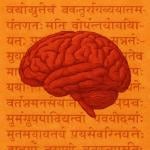Last updated on: March 12, 2008 at 8:34 pm
By
Desh Kapoor
In all early civilizations, the first expression of mathematical understanding appears in the form of counting systems. Numbers in very early societies were typically represented by groups of lines, though later different numbers came to be assigned specific numeral names and symbols (as in India) or were designated by alphabetic letters (such as in Rome). Although today, we take our decimal system for granted, not all ancient civilizations based their numbers on a ten-base system. In ancient Babylon, a sexagesimal (base 60) system was in use. The Decimal System in Harappa In India a decimal system was already in place during the Harappan period, as indicated by an analysis of Harappan weights and measures. Weights corresponding to ratios of 0.05, 0.1, 0.2, 0.5, 1, 2, 5, 10, 20, 50, 100, 200, and 500 have been identified, as have scales with decimal divisions. A particularly notable characteristic of Harappan weights and measures is their remarkable accuracy. A bronze rod marked in units of 0.367 inches points to the degree of precision demanded in those times. Such scales were particularly important in ensuring proper implementation of town planning rules that required roads of fixed widths to run at right angles to each other, for drains to be constructed of precise measurements, and for homes to be constructed according to specified guidelines. The existence of a gradated system of accurately marked weights points to the development of trade and commerce in Harappan society. Mathematical Activity in the Vedic Period In the Vedic period, records of mathematical activity are mostly to be found in Vedic texts associated with ritual activities. However, as in many other early agricultural civilizations, the study of arithmetic and geometry was also impelled by secular considerations. Thus, to some extent early mathematical developments in India mirrored the developments in Egypt, Babylon and China . The system of land grants and agricultural tax assessments required accurate measurement of cultivated areas. As land was redistributed or consolidated, problems of mensuration came up that required solutions. In order to ensure that all cultivators had equivalent amounts of irrigated and non-irrigated lands and tracts of equivalent fertility - individual farmers in a village often had their holdings broken up in several parcels to ensure fairness. Since plots could not all be of the same shape - local administrators were required to convert rectangular plots or triangular plots to squares of equivalent sizes and so on. Tax assessments were based on fixed proportions of annual or seasonal crop incomes, but could be adjusted upwards or downwards based on a variety of factors. This meant that an understanding of geometry and arithmetic was virtually essential for revenue administrators. Mathematics was thus brought into the service of both the secular and the ritual domains. Arithmetic operations (Ganit) such as addition, subtraction, multiplication, fractions, squares, cubes and roots are enumerated in the Narad Vishnu Purana attributed to Ved Vyas (pre-1000 BC). Examples of geometric knowledge (rekha-ganit) are to be found in the Sulva-Sutras of Baudhayana (800 BC) and Apasthmaba (600 BC) which describe techniques for the construction of ritual altars in use during the Vedic era. It is likely that these texts tapped geometric knowledge that may have been acquired much earlier, possibly in the Harappan period. Baudhayana's Sutra displays an understanding of basic geometric shapes and techniques of converting one geometric shape (such as a rectangle) to another of equivalent (or multiple, or fractional) area (such as a square). While some of the formulations are approximations, others are accurate and reveal a certain degree of practical ingenuity as well as some theoretical understanding of basic geometric principles. Modern methods of multiplication and addition probably emerged from the techniques described in the Sulva-Sutras. Read more
















